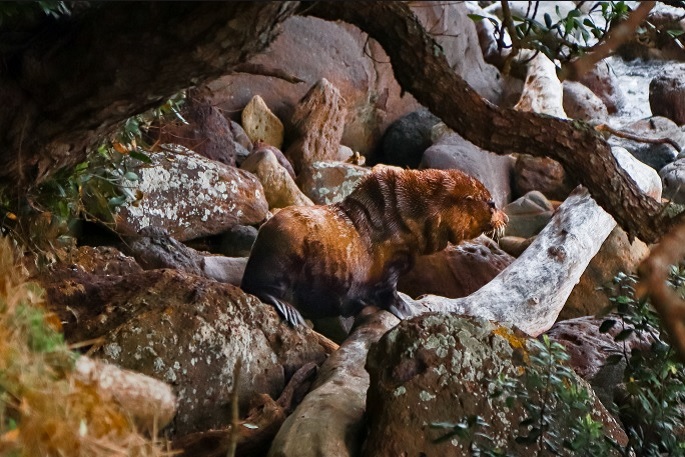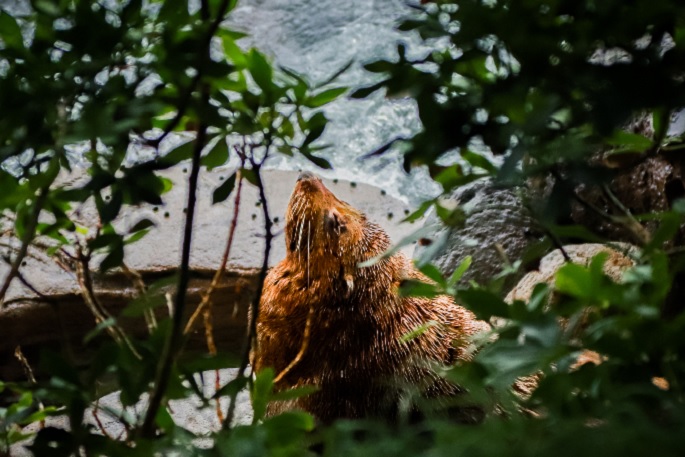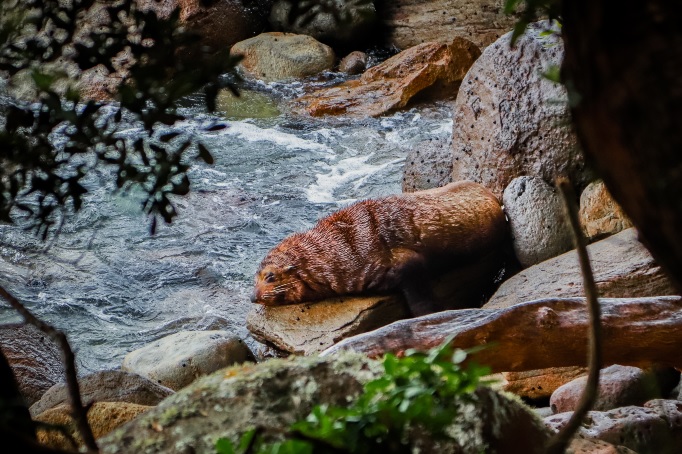While enjoying a walk around the Mauao base track, local photographer Nicholle Roberson spotted a New Zealand fur seal or kekeno sunning itself on the rocks.
Regarded as 'our local Mauao seal” Nicholle took photos from the safety of the track as the seal snoozed, sniffed the air, and hauled itself over rocks.
Three types of seal breed in New Zealand: fur seals, sea lions and elephant seals. Leopard seals also visit. Visitors to Mount Maunganui often see fur seals sleeping on the rocks around Mauao – they tend to be found on rocky shorelines, whereas sea lions prefer sandy beaches. Other rocky shores fur seals can be found on are in the Chatham Islands, the subantarctic islands including Macquarie Island, as well as parts of Australia.
For many walking around the base of Mauao, there is often a surprising and delightful moment on coming across fur seals relaxing on the rocky outcrops below the track.
There is no breeding colony here at Mount Maunganui, but breeding colonies do occur as far north as the Coromandel peninsula and as far south as the subantarctic islands. They are even seen north of Auckland on occasion.

A NZ fur seal resting on the rocks around Mauao. Photo: Nicholle Roberson/NixPix Photography.
This pointy-nosed seal has long pale whiskers and a body covered with two layers of fur. Their coat is dark grey-brown on the back, and lighter below; when wet, kekeno look almost black. In some animals the longer upper hairs have white tips which give the seal a silvery appearance.
The New Zealand fur seal/kekeno feed mainly on squid and small mid-water fish but also take larger species such as conger eels, barracuda, jack mackerel and hoki, mostly off the continental shelf.
They dive deeper and longer than any other fur seal. They are very good swimmers and weaned pups will sometimes travel great distances. On land seals have been found in unusual places such as backyards, drains and streets.

A NZ fur seal resting on the rocks around Mauao. Photo: Nicholle Roberson/NixPix Photography.
In August, 2022, a NZ fur seal managed chase a cat through a cat flap and into University of Waikato marine biologist Phil Ross' house in Omanu.
Despite these odd appearances, seals are best left alone with no human intervention.

Busted: the seal at the bottom of the stairs of an Omanu home in August 2022. Photo: Supplied.
The breeding season is nearly over, and takes place from mid-November to mid-January. During this time, females give birth to their pups and then mate.
As far as their conservation status goes, the NZ fur seal threat status is now least concerned, with a population recovering. However in the 1800s NZ fur seals once were on the brink of extinction. When humans arrived in New Zealand the population was around two million but then seals were hunted by Maoris for food and by European sealers for meat and pelts.
Since 1894 the NZ fur seals have been fully protected by the Marine Mammal Protection Act. The last population estimate was 200,000 fur seals in 2001 and they thrive around the rocky shores of New Zealand, so the population is expected to be higher now, but unknown by how much.
The DOC has a hands-off approach with seals but will intervene if the animal is in obvious danger such as getting too close to a road, is tangled in debris, being harassed by dogs or people or is seriously injured.

A NZ fur seal resting on the rocks around Mauao. Photo: Nicholle Roberson/NixPix Photography.
Seals are capable and resilient and given time and space, they usually find their way home. It's also important to remember that they are wild animals and will defend themselves if they feel threatened. Adult seals can move surprisingly quickly on land. While they can look harmless, seals can inflict serious injuries to dogs or people and can carry infectious diseases.
It is an offence under the Marine Mammals Protection Act 1978 to disturb, harass, harm, injure or kill a seal. A dog owner whose dog attacks a seal could face prosecution.
Dogs are banned from Mauao, due to not only seals but also other wildlife such as little blue penguins and grey-faced petrels that call the maunga their home.
DOC provide safety guidelines when watching seals. You should stay at least 20 m away, don't disturb seals by making loud noises or throwing things, keep dogs and children away, don't feed the seals, and never attempt to touch a seal. Never stand between a seal and the open sea.
If you see a seal which is severely injured or being harassed, call 0800 DOC HOT (0800 362 468).
More information on seals and what to do if you come across one can be found on the Department of Conservation website http://www.doc.govt.nz/nature/native-animals/marine-mammals/seals/nz-fur-seal/what-to-do/



1 comment
Fur seals
Posted on 22-02-2023 13:40 | By Sycamore2
Why COULD the owner of a dog that attacks a seal face prosecution? Why not the owner of a dog that attacks a seal WILL face prosecution?
Leave a Comment
You must be logged in to make a comment.